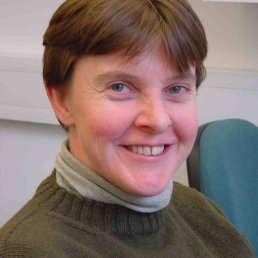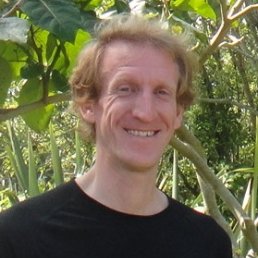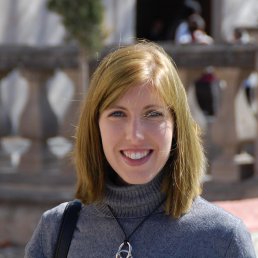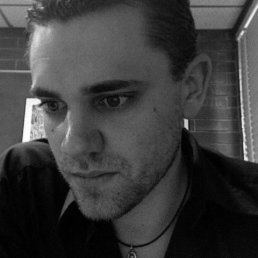Spectral Gap for the Stochastic Quantisation Equation on the 2-dimensional Torus
Towards a drive-through wheel alignment system
Abstract
As part of a suite of products that provide a drive thorough vehicle tyre inspection system the assessment of wheel alignment would be useful to drivers in maintaining their vehicles and reducing tyre wear. The current method of assessing wheel alignment involves fitting equipment to the tyre and assessment within a garage environment.
The challenge is to develop a technique that can be used in the roadway with no equipment fitted to the vehicle. The WheelRight equipment is already capturing images of tyres from both front and side views. Pressure sensors in the roadway also allow a tyre pressure footprint to be created. Using the existing data to interpret the alignment of the wheels on each axle is a preferred way forward.
A statistical framework for rough paths and some challenges
Catastrophic Buckling Behavior of Shell Structures: A Brief History Followed by New Experiments and Theory on Spherical Shells
Abstract
The stability of structures continues to be scientifically fascinating and technically important. Shell buckling emerged as one of the most challenging nonlinear problems in mechanics more than fifty years ago when it was intensively studied. It has returned to life with new challenges motivated not only by structural applications but also by developments in the life sciences and in soft materials. It is not at all uncommon for slightly imperfect thin cylindrical shells under axial compression or spherical shells under external pressure to buckle at 20% of the buckling load of the perfect shell. A historical overview of shell buckling will be presented followed by a discussion of recent work by the speaker and his collaborators on the buckling of spherical shells. Experimental and theoretical work will be described with a focus on imperfection-sensitivity and on viewing the phenomena within the larger context of nonlinear stability.
16:00
Sobolev and Lipschitz regularity for bounded minimizers of some anisotropic orthotropic functionals
Abstract
We prove higher differentiability of bounded local minimizers to some degenerate functionals satisfying anisotropic growth conditions. In the two-dimensional case we also study the Lipschitz regularity of such minimizers without any limitation on the exponents of anisotropy.
Parabolic problems with critical growth
Abstract
I will discuss on the existence and regularity results for the heat flow of the so called H-systems and for more general parabolic p-laplacian problems with critical growth.
Topologically Ordered Matter and Why You Should be Interested
Abstract
In two dimensional topological phases of matter, processes depend on gross topology rather than detailed geometry. Thinking in 2+1 dimensions, the space-time histories of particles can be interpreted as knots or links, and the amplitude for certain processes becomes a topological invariant of that link. While sounding rather exotic, we believe that such phases of matter not only exist, but have actually been observed (or could be soon observed) in experiments. These phases of matter could provide a uniquely practical route to building a quantum computer. Experimental systems of relevance include Fractional Quantum Hall Effects, Exotic superconductors such as Strontium Ruthenate, Superfluid Helium, Semiconductor-Superconductor-Spin-Orbit systems including Quantum Wires. The physics of these systems, and how they might be used for quantum computation will be discussed.
14:15
Wetropolis flood demonstrator
Abstract
The mathematical design of the table flood demonstrator Wetropolis will be presented. Wetropolis illustrates the concepts of extreme rainfall and flooding.
It shows how extreme rainfall events can cause flooding of a city due to groundwater and river flood peaks. Rainfall is supplied randomly in space using four outcomes (in a reservoir, on a moor, at both places or nowhere) and randomly in time using four rainfall intensities (1s, 2s, 4s, or 9s during a 10s Wetropolis day), including one extreme event, via two skew-symmetric discrete probability distributions visualised by two Galton boards. Wetropolis can be used for both public outreach and as scientific testing environment for flood mitigation and data assimilation.
More information: https://www.facebook.com/resurging.flows
Numerical approximation of heart electromechanics
High-order filtered schemes for time-dependent second order HJB equations
Abstract
In this talk, we present and analyse a class of “filtered” numerical schemes for second order Hamilton-Jacobi-Bellman (HJB) equations, with a focus on examples arising from stochastic control problems in financial engineering. We start by discussing more widely the difficulty in constructing compact and accurate approximations. The key obstacle is the requirement in the established convergence analysis of certain monotonicity properties of the schemes. We follow ideas in Oberman and Froese (2010) to introduce a suitable local modification of high order schemes, which are necessarily non-monotone, by “filtering” them with a monotone scheme. Thus, they can be proven to converge and still show an overall high order behaviour for smooth enough value functions. We give theoretical proofs of these claims and illustrate the behaviour with numerical tests.
This talk is based on joint work with Olivier Bokanowski and Athena Picarelli.
Modelling Aspects of Hotel Recommendation Systems
Abstract
Hotels.com is one of the world’s leading accommodation booking websites featuring an inventory of around 300.000 hotels and 100s of millions of users. A crucial part of our business is to act as an agent between these two sides of the market, thus reducing search costs and information asymmetries to enable our visitors to find the right hotel in the most efficient way.
From this point of view selling hotels is one large recommendation challenge: given a set of items and a set of observed choices/ratings, identify a user’s preference profile. Over the last years this particular problem has been intensively studied by a strongly interdisciplinary field based on ideas from choice theory, linear algebra, statistics, computer science and machine learning. This pluralism is reflected in the broad array of techniques that are used in today’s industry applications, i.e. collaborative filtering, matrix factorization, graph-based algorithms, decision trees or generalized linear models.
The aim of this workshop is twofold.
Firstly we want to give some insight into the statistical modelling techniques and assumptions employed at hotels.com, the practical challenges one has to face when designing a flexible and scalable recommender system and potential gaps between current research and real-world applications.
Secondly we are going to consider some more advanced questions around learning to rank from partial/incomplete feedback (1), dealing with selection-bias correction (2) and how econometrics and behavioral theory (eg Luce, Kahneman /Tversky) can be used to complement existing techniques (3).
17:30
Pfaffian functions and elliptic functions
Abstract
After giving some motivation, I will discuss work in progress with Harry Schmidt in which we give a pfaffian definition of Weierstrass elliptic functions, refining a result due to Macintyre. The complexity of our definition is bounded by an effective absolute constant. As an application we give an effective version of a result of Corvaja, Masser and Zannier on a sharpening of Manin-Mumford for non-split extensions of elliptic curves by the additive group. We also give a higher dimensional version of their result.
Cohomology vs. Bounded Cohomology vs. Continuous Bounded Cohomology
Abstract
I will compare features of (classical) cohomology theory of groups to the rather exotic features of bounded (or continuous bounded) cohomology of groups.
Besides giving concrete examples I will state classical cohomological tools/features and see how (if) they survive in the case of bounded cohomology. Such will include the Mayer-Vietoris sequence, the transfer map, resolutions, classifying spaces, the universal coefficient theorem, the cup product, vanishing results, cohomological dimension and relation to extensions.
Finally I will discuss their connection to each other via the comparison map.
16:00
Random waves on the three-dimensional torus and correlations of spherical lattice points
Abstract
I will discuss some recent work, joint with R. Maffucci, concerning random Laplace eigenfunctions on the torus T^3=R^3/Z^3. Studying various statistics of these 'random waves' we will be confronted with an arithmetic question about linear relations among integer points on spheres.
A Bayesian Methodology for Systemic Risk Assessment in Financial Networks
Abstract
We develop a Bayesian methodology for systemic risk assessment in financial networks such as the interbank market. Nodes represent participants in the network and weighted directed edges represent liabilities. Often, for every participant, only the total liabilities and total assets within this network are observable. However, systemic risk assessment needs the individual liabilities. We propose a model for the individual liabilities, which, following a Bayesian approach, we then condition on the observed total liabilities and assets and, potentially, on certain observed individual liabilities. We construct a Gibbs sampler to generate samples from this conditional distribution. These samples can be used in stress testing, giving probabilities for the outcomes of interest. As one application we derive default probabilities of individual banks and discuss their sensitivity with respect to prior information included to model the network. An R-package implementing the methodology is provided. (This is joint work with Axel Gandy (Imperial College London).)
Asymptotic and Numerical Analysis of Carrier's Problem
Abstract
A computational and asymptotic analysis of the solutions of Carrier's problem is presented. The computations reveal a striking and beautiful bifurcation diagram, with an infinite sequence of alternating pitchfork and fold bifurcations as the bifurcation parameter tends to zero. The method of Kuzmak is then applied to construct asymptotic solutions to the problem. This asymptotic approach explains the bifurcation structure identified numerically, and its predictions of the bifurcation points are in excellent agreement with the numerical results. The analysis yields a novel and complete taxonomy of the solutions to the problem, and demonstrates that a claim of Bender & Orszag is incorrect.
A multilevel method for semidefinite programming relaxations of polynomial optimization problems with structured sparsity
Abstract
We propose a multilevel paradigm for the global optimisation of polynomials with sparse support. Such polynomials arise through the discretisation of PDEs, optimal control problems and in global optimization applications in general. We construct projection operators to relate the primal and dual variables of the SDP relaxation between lower and higher levels in the hierarchy, and theoretical results are proven to confirm their usefulness. Numerical results are presented for polynomial problems that show how these operators can be used in a hierarchical fashion to solve large scale problems with high accuracy.
11:00
Geometric Invariant Theory and its Variation
Abstract
A central tool in the construction of moduli spaces throughout algebraic geometry and beyond, geometric invariant theory (GIT) aims to sensibly answer the question, "How can we quotient an algebraic variety by a group action?" In this talk I will explain some basics of GIT and indicate how it can be used to build moduli spaces, before exploring one of its salient features: the non-canonicity of the quotient. I will show how the dependence on an additional parameter, a choice of so-called 'linearisation', leads to a rich 'wall crossing' picture, giving different interrelated models of the quotient. Time permitting, I will also speak about recent developments in non-reductive GIT, and joint work extending this dependence to the non-reductive setting.
15:00
On Ring Learning with Errors and its uses in cryptography
Abstract
We introduce Learning with Errors and Ring Learning with Errors, two hard
lattice problems which are widely used for security of Homomorphic
Encryption schemes. Following a study we conducted comparing four such
schemes, the best scheme was the so-called BGV scheme, introduced by
Brakerski-Gentry-Vaikuntanathan in 2012. We present it as an example of a
ring-based homomorphic scheme, discussing its number theoretic
optimisations.
11:30
Partition Identities, Q-series and the Quest for Rogers-Ramanujan Involutions
Abstract
On short time existence of Lagrangian mean curvature flow
Abstract
One of the simplest, and yet largely still open, questions that one can ask about special Lagrangian submanifolds is whether they exist in a given homology class. One possible approach to this problem is to evolve a given Lagrangian submanifold under mean curvature flow in the hope of reaching a special Lagrangian submanifold in the same homology class. It is known, however, that even for 'nice' initial conditions the flow will develop singularities in finite time.
I will talk about a joint work with Tom Begley, in which we prove a short time existence result for Lagrangian mean curvature flow, where the initial condition is a Lagrangian submanifold of complex Euclidean space with a certain type of singularity. This is a first step to proving, as conjectured by Joyce, that one may 'continue' Lagrangian mean curvature flow after the occurrence of singularities.
14:30
Random plane waves and other classes of random functions
Abstract
There are several classes of random function that appear naturally in mathematical physics, probability, number theory, and other areas of mathematics. I will give a brief overview of some of these random functions and explain what they are and why they are important. Finally, I will explain how I use chebfun to study these functions.
14:30
Decomposing the Complete r-Graph
Abstract
The Graham-Pollak theorem states that to decompose the complete graph $K_n$ into complete bipartite subgraphs we need at least $n-1$ of them. What
happens for hypergraphs? In other words, suppose that we wish to decompose the complete $r$-graph on $n$ vertices into complete $r$-partite $r$-graphs; how many do we need?
In this talk we will report on recent progress on this problem. This is joint work with Luka Milicevic and Ta Sheng Tan.
14:00
Stochastic discrete Hamiltonian variational integrators
Abstract
Stochastic Hamiltonian systems with multiplicative noise are a mathematical model for many physical systems with uncertainty. For example, they can be used to describe synchrotron oscillations of a particle in a storage ring. Just like their deterministic counterparts, stochastic Hamiltonian systems possess several important geometric features; for instance, their phase flows preserve the canonical symplectic form. When simulating these systems numerically, it is therefore advisable that the numerical scheme also preserves such geometric structures. In this talk we propose a variational principle for stochastic Hamiltonian systems and use it to construct stochastic Galerkin variational integrators. We show that such integrators are indeed symplectic, preserve integrals of motion related to Lie group symmetries, demonstrate superior long-time energy behavior compared to nonsymplectic methods, and they include stochastic symplectic Runge-Kutta methods as a special case. We also analyze their convergence properties and present the results of several numerical experiments.
Elementary Applied Topology
Abstract
In this meeting we will talk about the first two chapters of Robert Ghrist's book "Elementary Applied Topology". The book is freely available at the following link: https://www.math.upenn.edu/~ghrist/notes.html
Community Detection in Annotated Bipartite Networks
Abstract
A successful programme of personalised discounts and recommendations relies on identifying products that customers want, based both on items bought in the past and on relevant products that the customers have not yet purchased. Using basket-level grocery shopping data, we aim to use clustering ("community detection") techniques to identify groups of shoppers with similar preferences, along with the corresponding products that they purchase, in order to design better recommendation systems.
Stochastic block models (SBMs) are an increasingly popular class of methods for community detection. In this talk, I will expand on some work done by Newman and Clauset [1] that uses a modified SBM for community detection in annotated networks. In these networks, additional information in the form of node metadata is used to improve the quality of the inferred community structure. The method can be extended to bipartite networks, which contain two types of nodes and edges only between nodes of different types. I will show some results obtained from applying this method to a bipartite network of customers and products. Finally, I will discuss some desirable extensions to this method such as incorporating edge weights and assessing the relationship between metadata and network structure in a statistically robust way.
[1] Structure and inference in annotated networks, MEJ Newman and A Clauset, Nature Communications 7, 11863 (2016).
Note: This talk will cover similar topics to my presentation in the InFoMM group meeting on Friday, November 25 but it won't be exactly the same. I will focus more on the mathematical details for my JAMS talk.
Finite BMS transformations
Abstract
After a brief review of holographic features of general relativity in 3 and 4 dimensions, I will show how to derive the transformation laws of the Bondi mass and angular momentum aspects under finite supertranslations, superrotations and complex Weyl rescalings.
Coefficients for commutative K-theory
Abstract
I will begin the talk by reviewing the definition of commutative K-theory, a generalized cohomology theory introduced by Adem and Gomez. It is a refinement of topological K-theory, where the transition functions of a vector bundle satisfy a commutativity condition. The theory is represented by an infinite loop space which is called a “classifying space for commutativity”. I will describe the homotopy type of this infinite loop space. Then I will discuss the graded ring structure on its homotopy groups, which corresponds to the tensor product of vector bundles.
The Calderón problem for the fractional Laplacian
Abstract
We show global uniqueness in an inverse problem for the fractional Schrödinger equation: an unknown potential in a bounded domain is uniquely determined by exterior measurements of solutions. We also show global uniqueness in the partial data problem where the measurements are taken in an arbitrary open subset of the exterior. The results apply in any dimension $\geq 2$ and are based on a strong approximation property of the fractional equation that extends earlier work. This special feature of the nonlocal equation renders the analysis of related inverse problems radically different from the traditional Calderón problem. This is a joint work with T. Ghosh (HKUST) and G. Uhlmann (Washington).
14:15
Asymptotic behaviour for equidispersive solutions of the Boltzmann equation
Abstract
In this talk we consider particular solutions of the Boltzmann equation which have the form $f (x,v,t) = g (v − M (t)x,t)$ where $M (t) = A(I + tA)^{−1}$ with the matrix $A$ describing a shear flow or a dilatation or a combination of both. These solutions are known as equidispersive solutions. We will show that, for different choices for the matrix A and for different homogeneities of the collision kernel, we obtain different long time asymptotics for the corresponding equidispersive solutions. In particular we will focus on the case of simple shear flow and prove rigorously the existence of self-similar solutions with exponentially increasing internal energy.
14:15
Moduli spaces of generalized holomorphic bundles
Abstract
Generalized holomorphic bundles are the analogues of holomorphic vector bundles in the generalized geometry setting. In this talk, I will discuss the deformation theory of generalized holomorphic bundles on generalized Kaehler manifolds. I will also give explicit examples of moduli spaces of generalized holomorphic bundles on Hopf surfaces and on Inoue surfaces. This is joint work with Shengda Hu and Mohamed El Alami
12:45
Understanding the Landscape of N=2 Super-Conformal Field Theories
Abstract
In this talk I will argue that a systematic classification of 4d N=2 superconformal field theories is possible through a careful analysis of the geometry of their Coulomb branches. I will carefully describe this general framework and then carry out the classification explicitly in the rank-1, that is one complex dimensional Coulomb branch, case. We find that the landscape of rank-1 theories is still largely unexplored and make a strong case for the existence of many new rank-1 SCFTs, almost doubling the number of theories already known in the literature. The existence of 4 of them has been recently confirmed using alternative methods and others have an enlarged N=3, supersymmetry.
While our study focuses on Coulomb Branch geometries, we can extract much more information about these SCFTs. I will spend the last part of my talk outlining what else we can learn and the extent in which our study can be complementary to other method to study SCFTs (Conformal Bootstrap above all!).
Exponential Motives
Abstract
Numbers like the special values of the gamma and the Bessel functions or the Euler-Mascheroni constant are not expected to be periods in the usual sense of algebraic geometry. However, they can be regarded as coefficients of the comparison isomorphism between two cohomology theories associated to pairs consisting of an algebraic variety and a regular function: the de Rham cohomology of a connection with irregular singularities, and the so-called “rapid decay cohomology”. Following ideas of Kontsevich and Nori, I will explain how this point of view allows one to construct a Tannakian category of exponential motives over a subfield of the complex numbers. The upshot is that one can attach to exponential periods a Galois group that conjecturally governs all algebraic relations between them. Classical results and conjectures in transcendence theory may be reinterpreted in this way. No prior knowledge of motives will be assumed, and I will focus on examples rather than on the more abstract aspects of the theory. This is a joint work with P. Jossen (ETH Zürich).
Academic careers: a panel discussion
Abstract
Featuring
Professor Alison Etheridge, Professor of Probability in the Mathematical Institute and Department of Statistics, Oxford

Professor Ben Green, Waynflete Professor of Pure Mathematics, Oxford

Dr Heather Harrington, Royal Society University Research Fellow in the Mathematical Institute, Oxford

Professor Jon Keating, Henry Overton Wills Professor of Mathematics, Bristol and Chair of the Heilbronn Institute for Mathematical Research
[[{"fid":"23604","view_mode":"media_square","fields":{"format":"media_square","field_file_image_alt_text[und][0][value]":"Jon Keating","field_file_image_title_text[und][0][value]":"Jon Keating"},"type":"media","attributes":{"alt":"Jon Keating","title":"Jon Keating","height":"258","width":"258","class":"media-element file-media-square"}}]]
Dr Christopher Voyce, Head of Research Facilitation in the Mathematical Institute, Oxford

Hyperbolic Dehn filling in dimension four
Abstract
By gluing copies of a deforming polytope, we describe some deformations of complete, finite-volume hyperbolic cone four-manifolds. Despite the fact that hyperbolic lattices are locally rigid in dimension greater than three (Garland-Raghunathan), we see a four-dimensional analogue of Thurston's hyperbolic Dehn filling: a path of cone-manifolds $M_t$ interpolating between two cusped hyperbolic four-manifolds $M_0$ and $M_1$.
This is a joint work with Bruno Martelli.

